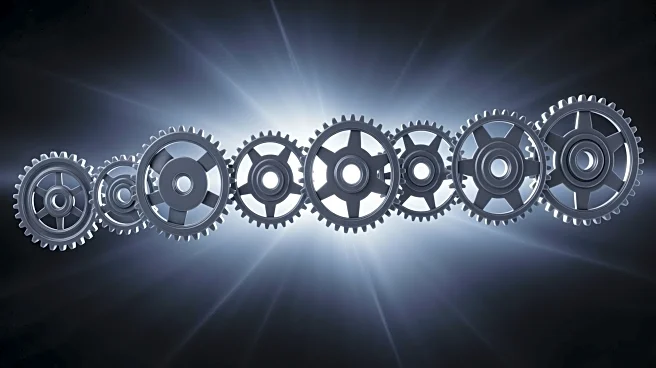What's Happening?
Researchers led by mathematician Yunan Yang have introduced a novel method using time-delay snapshots to identify dynamics in chaotic systems. This approach, detailed in their paper published in Physical
Review Letters, leverages invariant measures expressed in time-delay coordinates. These measures link present observations to past values, providing sufficient information to distinguish between different systems. The technique addresses a fundamental limitation in studying chaotic systems, where different systems can share the same statistical behaviors, making it difficult to identify underlying dynamics. The research team demonstrated the effectiveness of this method with physical examples, offering a robust tool for uncovering the rules underlying complex phenomena.
Why It's Important?
The development of time-delay snapshots is significant as it opens new possibilities for various fields, including weather prediction, spacecraft design, and the analysis of chaotic data in science and engineering. By providing a unique representation of chaotic systems, this method can enhance the accuracy of models used in these areas. The ability to distinguish between systems with similar statistical behaviors can lead to more precise predictions and better understanding of complex phenomena. This advancement could benefit industries reliant on accurate modeling and prediction, such as aerospace, meteorology, and engineering, potentially leading to improved designs and strategies.
What's Next?
The next steps for this research involve translating the theoretical results into practical computational tools that can be widely used across different fields. Researchers may focus on refining the method to enhance its applicability and accuracy in real-world scenarios. Potential reactions from industries and scientific communities could include collaborations to integrate this method into existing systems and models. As the technique gains traction, it may lead to further innovations in the study and application of chaotic systems, driving advancements in technology and science.
Beyond the Headlines
This development also raises interesting questions about the nature of chaos and predictability in complex systems. The ability to uniquely identify systems that were previously indistinguishable could lead to new insights into the fundamental principles governing chaotic behavior. This could have implications for fields such as psychology and biology, where understanding dynamic changes over time is crucial. The ethical and philosophical dimensions of predicting chaotic systems may also be explored, particularly in terms of how this knowledge is applied in decision-making processes.












